How to Create a Fishing Lake
Landowners with a few unproductive acres could improve the yield from their land by creating a fishing lake. Fisheries Management Consultant Dr Bruno Broughton explains how it’s done.
The movement towards the creation of purpose-built fisheries can be traced back to the 1970s, although it was a further decade before the boom began in earnest. The reasons for this trend are many and complex, including the decline in many river fisheries; the demand for good stocks of healthy fish; safe, comfortable bankside facilities; more family fishing; and the realisation that recreational fisheries can make profitable businesses.
Buying a ready-made lake or pond – a topic which I covered in a previous article – has become somewhat harder over the years as existing owners have become aware of the value of these assets. As a result the opportunities to purchase a lake on the cheap have diminished. Moreover, an existing water body may not be of a suitable design or size to allow you to develop the type of fishery you desire. For example, a heavily-silted lake with poor bankside access may be purchased for a song, but the costs that’ll be incurred in turning it into a good
fishing venue may be so great that it would actually prove cheaper to create a new lake from scratch!
Pick with care
It might sound stark-staringly obvious, but the success of a lake construction project depends on a suitable, accessible site and the presence of a reliable, unpolluted supply of water. If excavation machinery cannot easily gain access to the land, or if the removed material (spoil) cannot be retained on site, costs will escalate and could easily prove prohibitive.
Among the best sites are damp or marshy sections of farmland overlying clay. A lake formed in clay at the foot of a hillside should fill through surface drainage during wet weather. Other good sites include those where the subterranean water table lies close to the land surface; construction work then entails digging down to and exposing the underground water.
The damming of a stream or river can be a relatively cheap means by which a lake can be formed. However, the lake will be vulnerable to siltation and possible water pollution if the watercourse flows directly into it (‘on-line’); it is preferable to construct the lake to one side of the watercourse, with controllable inflow and outflow channels (‘an off-line’ arrangement).
Test holes

Unless a full geological survey is commissioned, it is prudent to dig test holes across the site to determine the nature of underlying substrate and to assess water supplies. Each hole need be no larger than, say, one or two metres square and three metres deep. The spoil should be stored next to each hole so it can be refilled. Each hole should be covered temporarily with an old door or panel of corrugated iron for obvious safety reasons – they can trap and drown land mammals – and each should be marked with standard red-and-white, barred, plastic hazard-warning tape strung between canes.
Planning Matters
It is a legal requirement that planning permission be granted before starting any engineering work to create or enlarge a lake which is for non-agricultural use, within 25 metres of a road, or where material is to be exported from the site.
The written consent of the Environment Agency is required if the excavation is within the flood plain of a river. The Agency’s consent may be withheld if the position of a lake is immediately alongside a watercourse which could breach the intervening bank, or if spoil is to be stored in the flood plain. Contact your local Environment Agency Flood Defence Office for advice.
Before planning consent is sought, a topographical land survey will be necessary to map the existing levels and contours. Special attention should be paid to the presence of constraining features, for example underground services, rock outcrops and mature trees. Detailed plans will then have to be drawn up for the lake creation and any ancillary work as part of the planning application process. A detailed fishery creation and development report from a qualified expert will greatly assist the likely success of an application.
Design and Construction
Size and Shape
It is usually possible to create a lake that covers no more than 60-65 per cent of the available space; the remaining land is for access and car
parks, paths, spoil disposal and tree planting.
Most stillwater fisheries are easier to manage if they are of uniform shape since this will simplify any fish removals which may become necessary in future. The value of a lake for angling will be enhanced if its outline is convoluted, with promontories and bays. This increases the length of fishable banks, is more interesting to fish and can provide benefits to other wildlife.
Islands
Islands add value to a lake, increasing the attractiveness of a fishery, enhancing its value to waterside wildlife and shielding one bank from
another. Large islands are not recommended because of the ‘iceberg effect’ (see Figure 1): a small lake with a large island can become a moat!
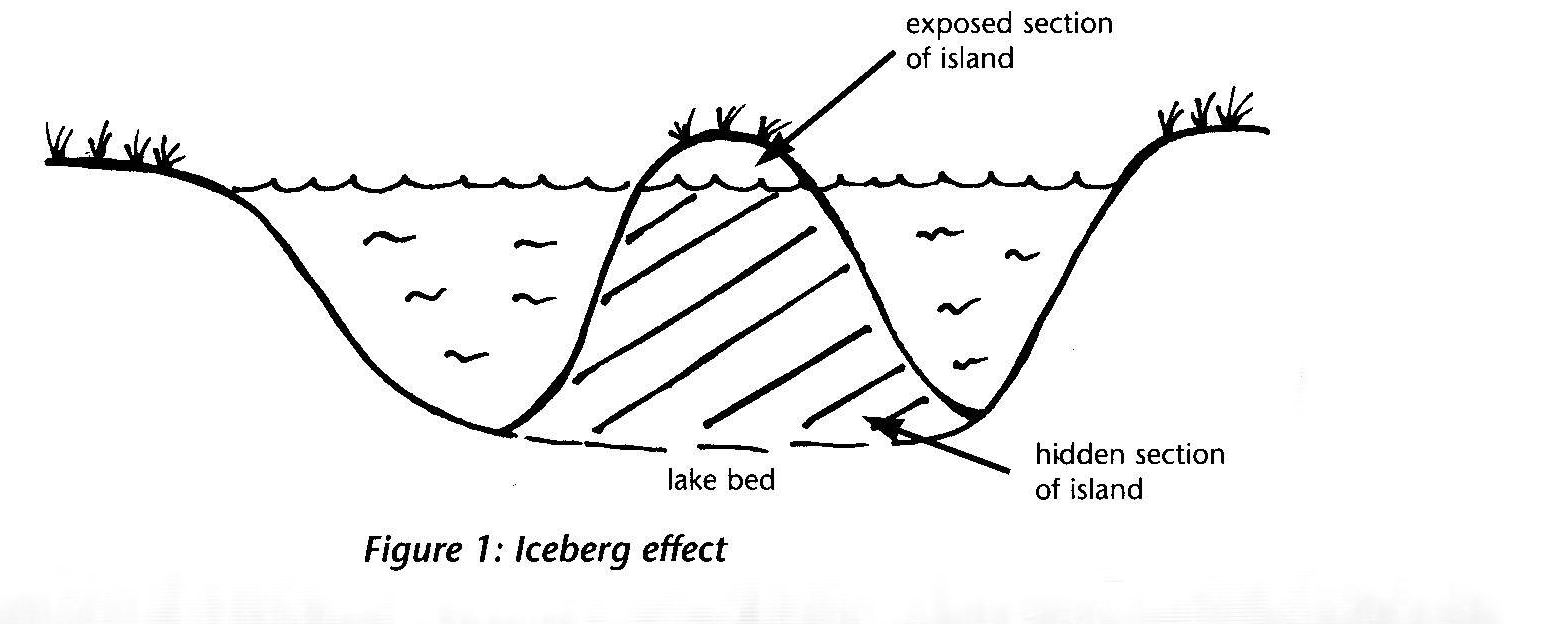
Depths and other features
The average water depth in most coarse fisheries need be no greater than about two metres although trout fisheries should contain areas of water somewhat deeper. Shallower water warms more quickly than deeper water, encouraging water plants and invertebrate animals, the food of coarse fish. Fish life may be placed at risk if most of the water is shallower than one metre, although limited areas of shallows are important for the growth of marginal plants and to provide shelter and breeding habitat for fish.
These figures reflect the depths of water; the depth of the excavation is governed by the projected final water level in the lake and – if appropriate – the seasonal change in the height of the water table.
Bottom contours
The ‘batter’ (or slope) of the banks in the margins of a fishing lake should be between 1:1.5 and 1:2.5. An underwater ledge or ‘berm’ will (i) allow the rapid establishment of a fringe of marginal plants but prevent their encroachment into the water offshore, and (ii) provide a safety feature for anyone who may slip or fall into the water (see Figure 2).
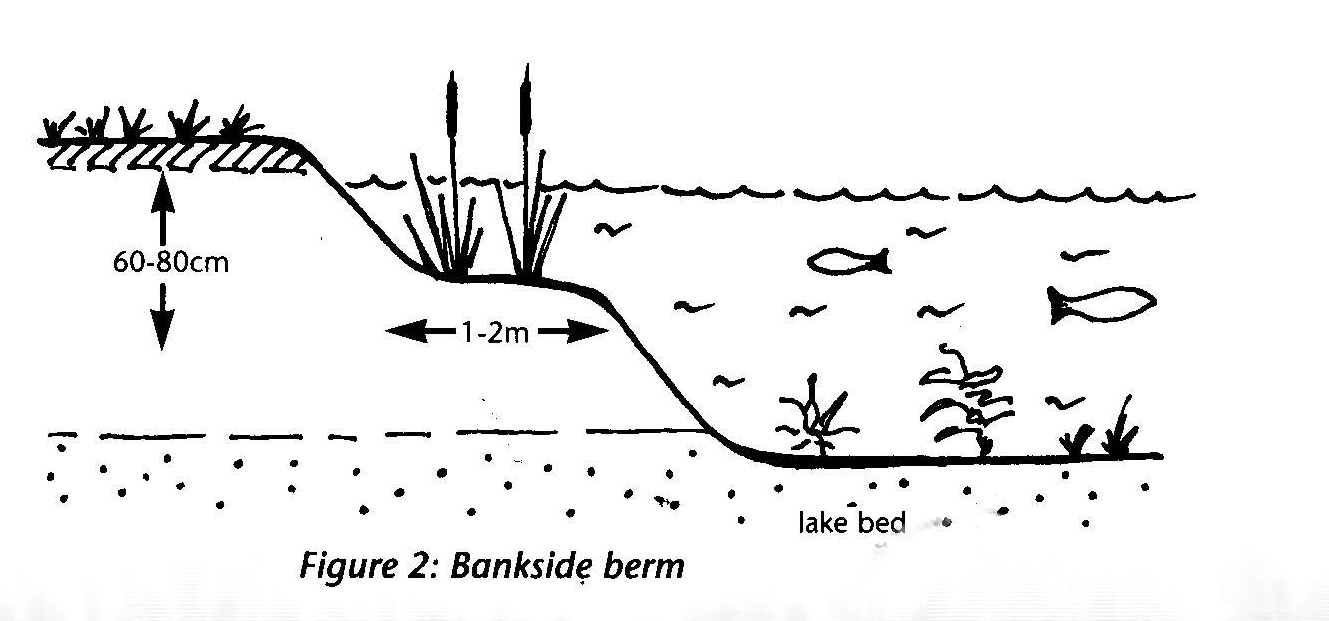
Construction Methods
Detailed advice on the construction of the lake is outside the remit of this article and technical advice should be sought from a qualified civil engineer.
Machinery
A drott or bulldozer could be used for the excavation. Generally, a drott is more useful as it can not only move soil but also lift and dump it, providing there is a base from which it can work; a bulldozer can only push soil, which will reduce its ability to landscape the banks.
Alternatively, some form of hydraulic excavator could be employed for the lake construction, especially if water will rapidly enter the newly excavated area. The machine could begin working towards the centre of the site, thereafter gradually removing spoil as it moves towards the edge. The spoil will have to be removed as the excavation proceeds, and one or more earth-moving vehicles will be necessary for this purpose.
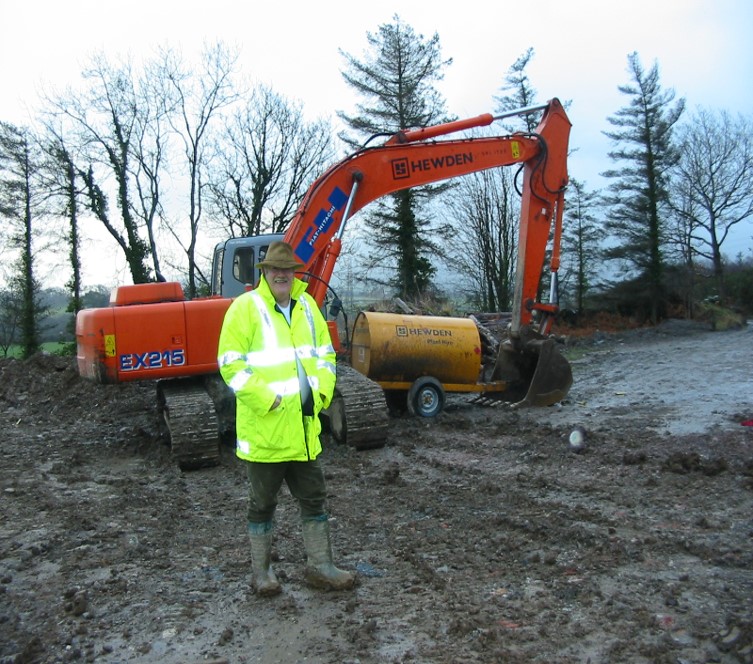
‘Cut-and-Fill’
On sloping sites overlying clay it may be possible to reduce costs by employing the ‘cut-and-fill’ method. Clay which is removed at the upslope side is used to raise the height of the banks along the downslope side. Because the embanked section will help retain water in the lake it must be impermeable to water, with a clay core which is linked (‘keyed’) into the underlying clay (see Figure 3).
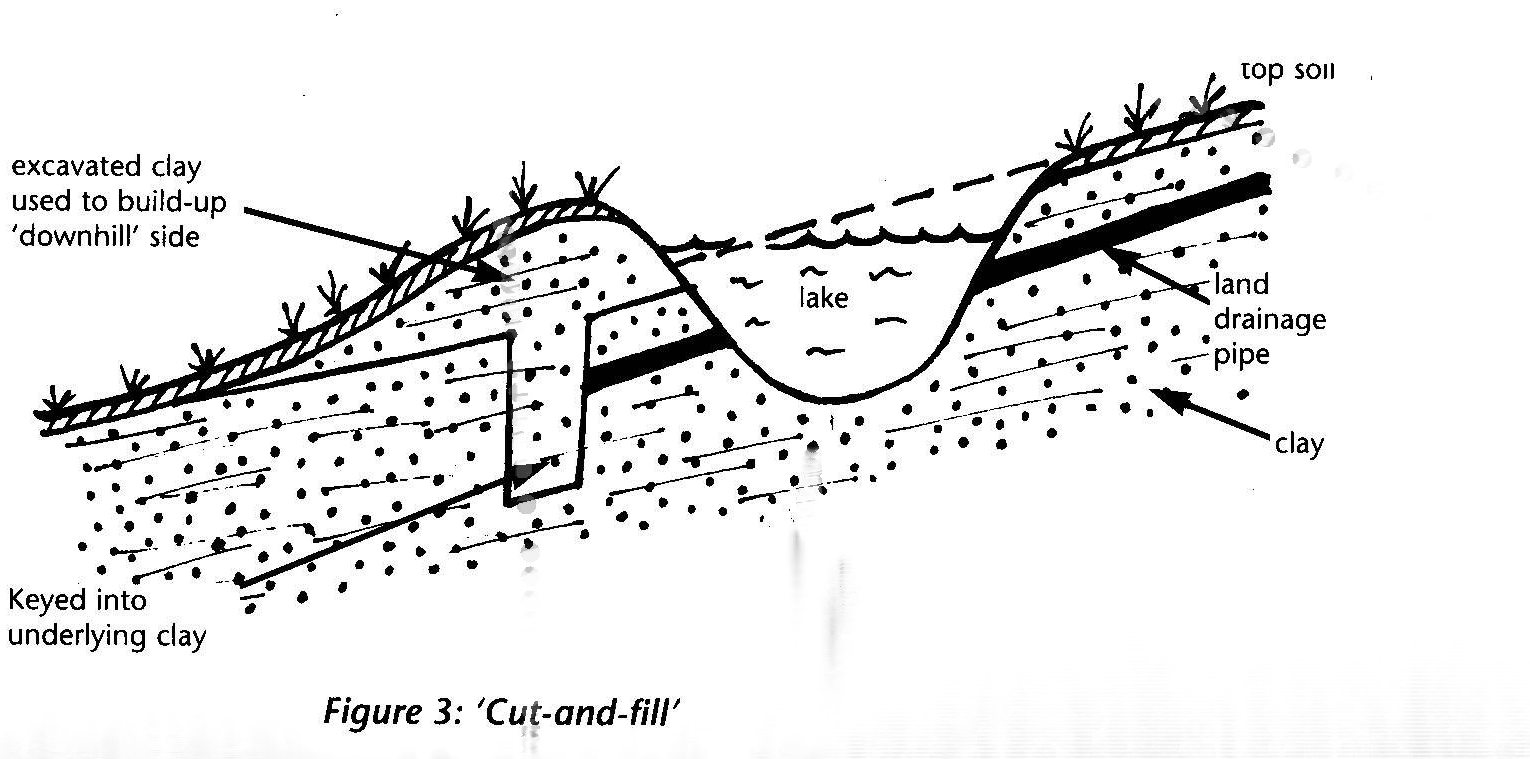
Dams
The creation of an on-line or off-line lake necessitates the erection of a stable dam to retain the impounded water. Such lakes should never be
constructed without consulting a fully qualified engineer and the Environment Agency. A licence may have to be obtained from the Agency
for the abstraction, impoundment and/or discharge of water. Under the provisions of the Reservoirs Act there are special legal requirements if the dam is to retain more than 25 million litres of water.
Provision should be made for the overflow of excess water and, if possible, the drainage of the lake via a sluice or monk.
It is essential that an on-line lake be protected against siltation by forming one or more silt traps on the feeder stream(s). Typically, a trap consists of a low weir – with a deepened area immediately upstream – which reduces water velocities and encourages silt settlement. Silt traps should be subject to routine cleansing to retain their effectiveness.
Keeping the water
On lakes formed in the underlying clay it’ll be necessary to cover any permeable material or fissures with a layer of clay, compressed into place (‘puddled’) when wet, to prevent water outflow.
It is important that the water can’t drain away through any land drainage pipes which might underlie the land surface. This could be accomplished by digging a so-called ‘key trench’ close to the banks on the downhill side, then infilling it with clay, thereby blocking the land drains.
Spoil Disposal
The excavated material (‘spoil’) which isn’t used in any water-retaining embankments could be ‘bladed’ into the slopes of the adjoining land or used to form low embankments around the site.
Once construction work is complete, topsoil should be retained to be re-spread over the disturbed land flanking the lake and on any spoil-disposal areas and embankments. Thereafter, it should be sown with a low-maintenance, coarse grass seed, perhaps incorporating a commercially available amenity or wild flower mixture.
If the bed of the lake appears to comprise infertile substrates, a shallow layer of this topsoil could be distributed over it to provide a good growing medium for water plants.
Clearly, there are a number of post-construction matters that will need to be addressed, including the prevention of bank erosion, the installation of car parks, the formation of access tracks and fishing pegs, the introduction of aquatic plants and invertebrates, tree and shrub planting… and fish stocking. These will be covered in a future article.
Finally, I have been involved in providing several hundred detailed fishery creation and development reports as part of my fisheries consultancy business. If you feel I can help you, please don’t hesitate to contact me on 01952 691515 or email me at: bruno.broughton21@gmail.com
Similar articles
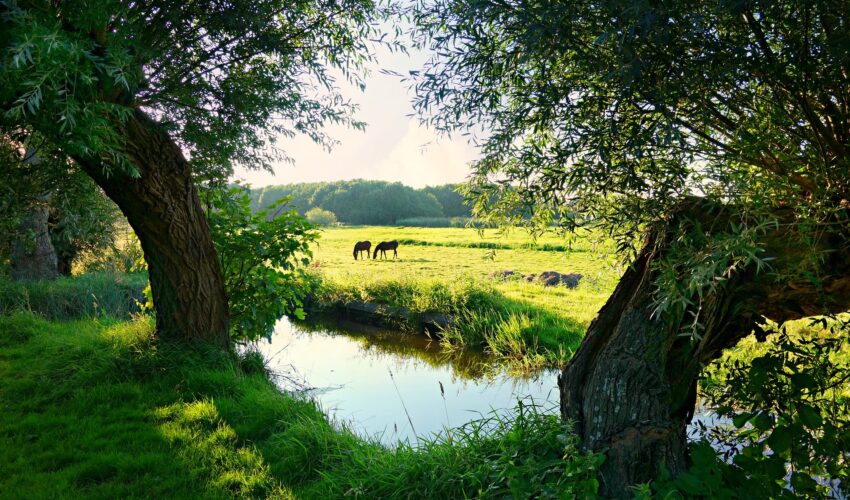
River Fishing – A guide to getting started
Are you thinking of going for a trip to the river in 2025 but find yourself filled with trepidation because you have never fished running water before? Well I want you to relax. Let us take the mysteries out of…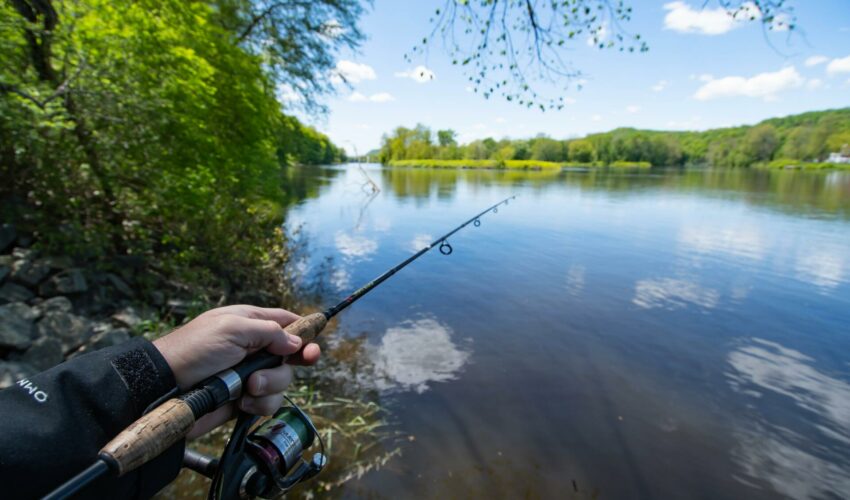
A guide to fishing licences in 2025
Whether you want to become a new angler or you’ve been fishing for years, you will be required to obtain the Environment Agency Rod Licence. In this article we explain what you’ll need if you want to go fishing in…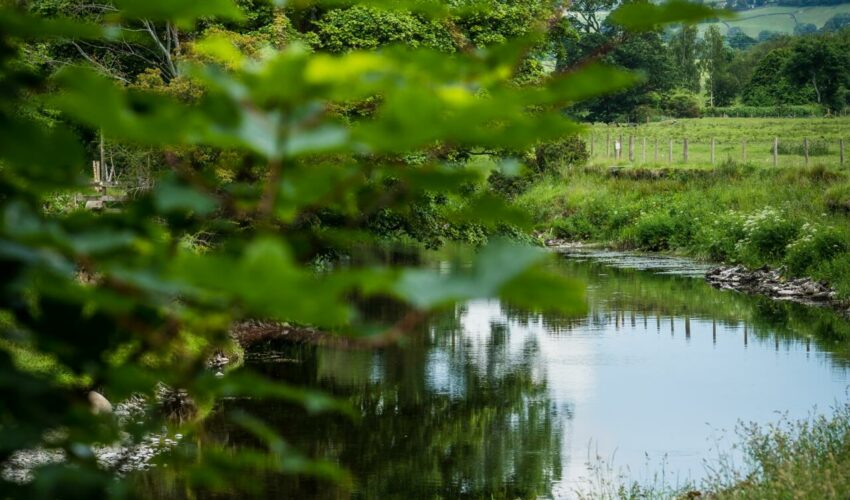
Make the most of the 2025 river season with this in-depth guide to fishing rivers
If you’re new to fishing rivers, or just fancy a change from fishing stillwaters, this guide will help you make the most of the new 2025 river fishing season. With advice on reading the water, what species to fish for…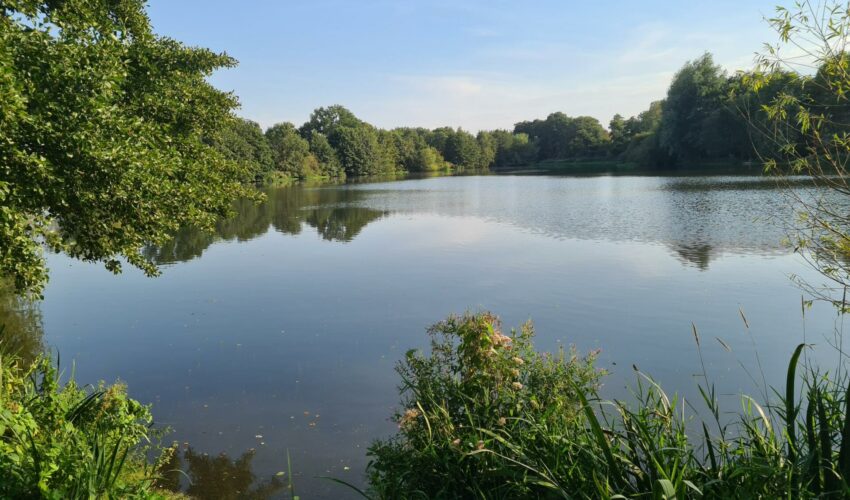
Our guide to fishing this spring (2025)
With the worst of the weather over (we hope!) and with spring finally here, it’s time to clean out that tackle box and get on the bank for some spring time fishing.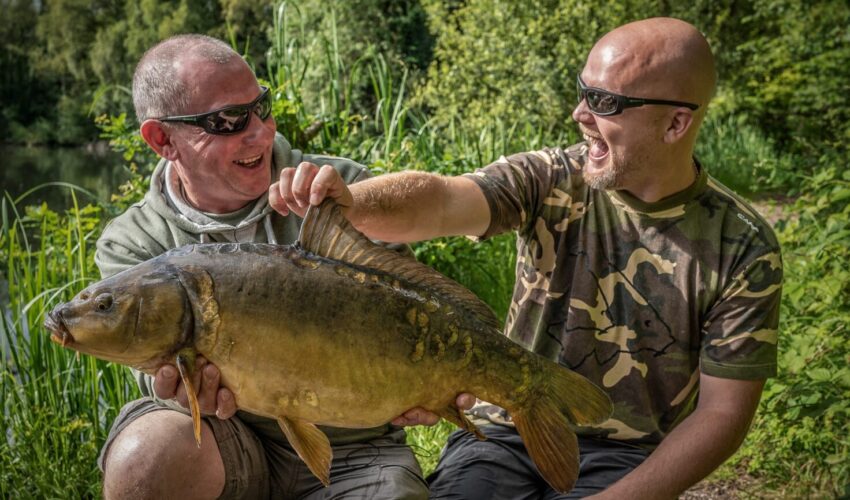
Take a friend fishing
Get ready to hit the water! From April 18th to May 4th, 2025, you can get a free fishing license to take a buddy out and show them what fishing’s all about. Yep, free! It’s all part of the “Take…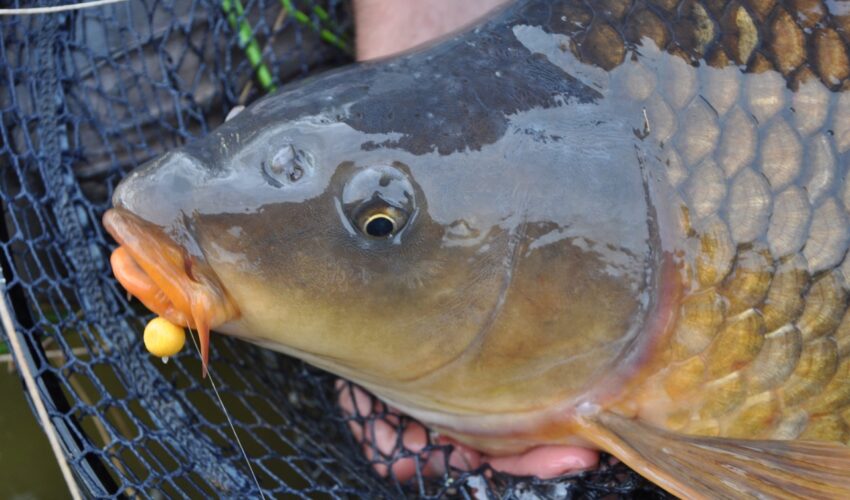
Fishing tips for hard days: How to get more bites
It happens to the best of anglers. Whether conditions are tough, the fish are moody, or our plans simply aren’t working, there are days we struggle. But what can you do to catch fish that seem unwilling to cooperate? There’s…Search by Region or County
Find new places to go fishing in your local area or county by choosing your destination below
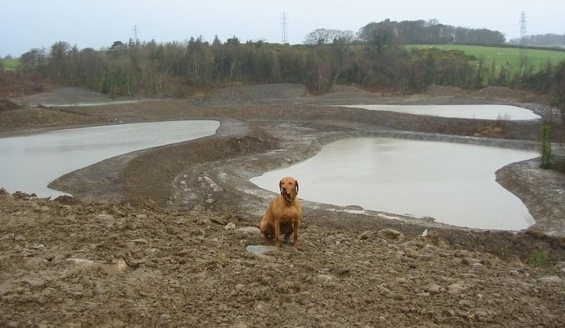



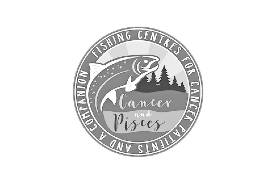




Comments